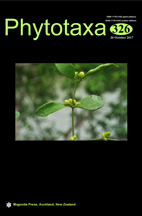Abstract
Leptolyngbya represents a group of common mat forming cyanobacteria with very simple trichome morphology and a polyphyletic evolutionary origin. In this paper, we used a polyphasic approach to describe a new genus morphologically similar to Leptolyngbya. Three strains of Leptolyngbyaceae cyanobacteria were isolated from submersed bark of tree branches which fell into the Hot-water spring from a rainforest in West Java. A phylogeny of the 16S rRNA gene indicated that these strains fell into a well-supported clade separate from Leptolyngbya sensu stricto. Although our strains possessed only minor morphological differences from other similar Leptolyngbyaceae species, these new taxa may be differentiated based on a peculiar form of reproduction, where hormogonia and hormocytes form tree-like tuft structures. Thus, based on a phylogenetic position, morphological, and ecological evidence, we propose a new genus, Onodrimia.

